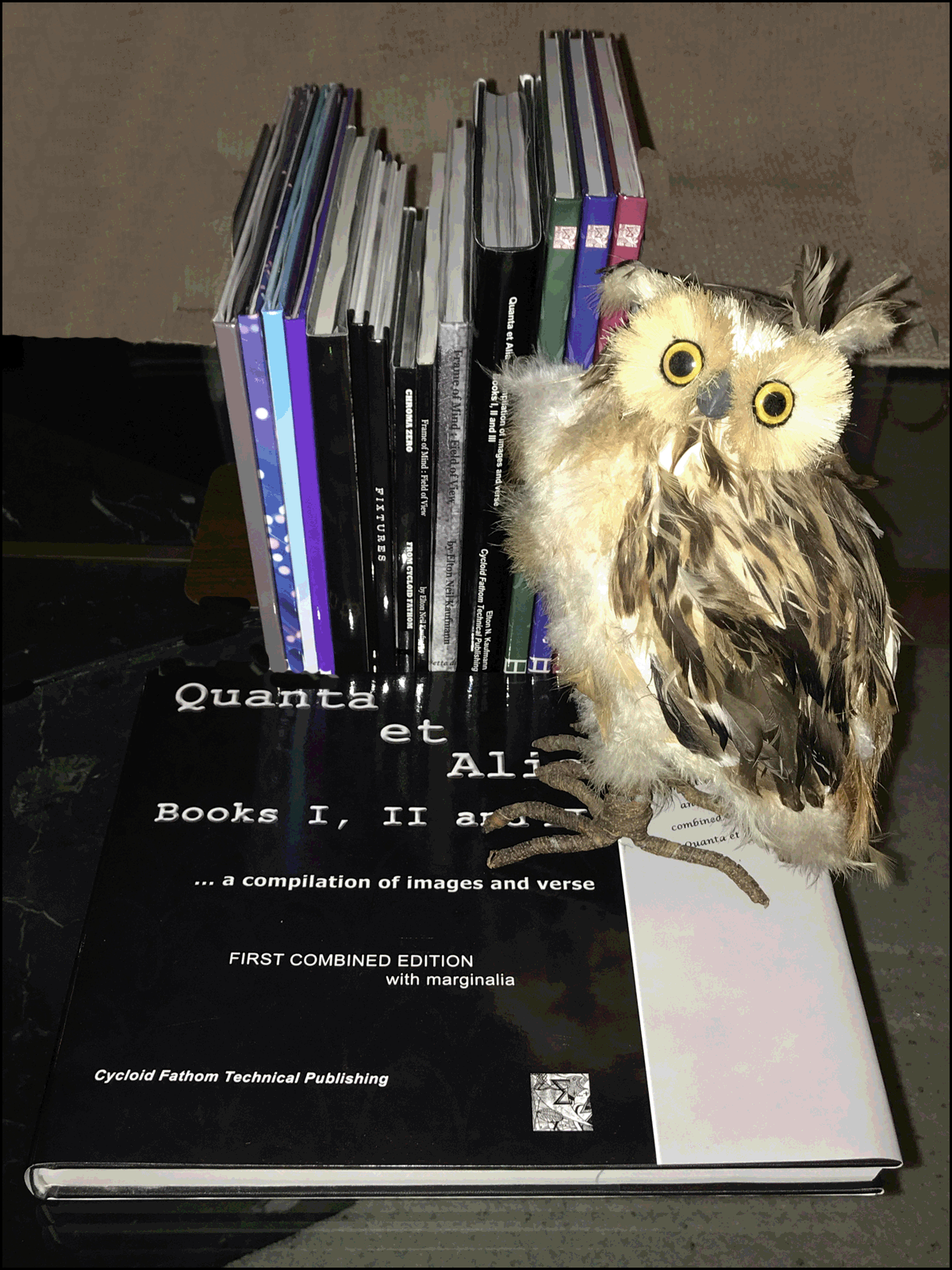Our government is big because a great many different people need and want a great many different things that require a great many different agencies and departments and experts and support staff to satisfy the often-changing demands of a diverse and fickle public. Were we a monolithic society with a single settled set of simple basic requirements that satisfy the reasonable needs of a unified public, then the size and cost needed to govern would be constrained.
Whereas the Great Dane can see over the wall and survey the territory ahead for a variety of likely threats that will appear when his size foretells his imminent intrusion, the sneaky Chihuahua, not seeing the big picture, fits unseen through a little-noticed hole to finagle a narrow result and then retreat. Our size and strength may intimidate, but we have often required far smaller interlocutors to accomplish our desired ends beyond our borders (or our “wall”).
The best results are obtained when the large and powerful collaborate with a cadre of smaller single-issue provocateurs and experts. The multilevel assault of such strange bedfellows can be most effective.
Big ideas, small steps
The sizes of the advocates is only one side of a well-planned multilevel approach. Velocity is a parameter that we impatient humans watch intently. Incrementalism has acquired a bad reputation. Gradualism, changes by degrees, small degrees, inflames that impatience. Would we prefer no change at all? No! Might being too fast overlook vital project details and speed past needed adjustments to the initial plan? Yes, it might! Might being too slow implementing a cast-in-stone initial plan miss new opportunities to update and revise for compatibility with an evolving world? Yes, it might! So, what to do?
The Great-Dane sized project can be subdivided into Chihuahua size pieces, some of which can speed forward while others need more circumspectual treatment. In that way, impatience is mitigated because progress is seen while the hard stuff does get done eventually without potential snafus, because the slower parts are subject to course corrections along the way. This is nice in theory, but how do we get real people to adhere to such a commonsense project management protocol, especially when personnel turnover in the cast of characters may be rampant over the long haul (or the short haul in today’s America)?
The ”slow and steady wins the race” moral to the story of the tortoise and the hare [1] is an oversimplification in our case. If the quality of the end result were the only concern, then we would probably prefer the slower more prudent approach by an actor we trust to produce a longer lasting robust outcome. As the plodding tortoise passes the sleeping overconfident hare, we are warned that a high energy “get it all done now” option, despite its popularity, may lead to exhaustion that favors mistakes being made along the way, a less-than-optimal result, with added effort and expense needed to go back to fix the oversights. (Sound familiar in today’s America?)
In real life, we need both. The high-powered race car driver who pleases the fans and garners sponsorships (the candidates and the leaders) as well as the mechanics back in the garage (the bureaucrats) who maintain the vehicle so it does not spin out of control.
Bending the bureaucracy
The practical among us, if kind, will praise our theory while saying “If only” as they doubt its workability. You see, we not only must consider what all projects must, that is cost, labor, supply chains, and the like. We must contend with all the well-meaning regulations that protect us from ourselves. There are the potential insults to the environment and the ecosystem, to equity in the workforce, and to safety on the job, as well as the approval of multiply revised plans by everyone in the world who, by any stretch of the imagination, might have an overlapping interest.
In this case, “size matters” because it is the massive and intransigent regulatory system in the bowels of a democratic government that stymies efficiency and progress. By some estimates, more than ninety percent of “law” is created by administrative rules issued by federal agencies.[2] No wonder many prefer a monarch who by one wave of a wand or sweep of a scepter can make something happen by fiat. In the US today, our president has found a way to bypass this morass by declaring an emergency. The relevance of the presumed emergent circumstances to the project in question seems irrelevant, but so far, it’s working. I do not condone this deceitful approach, but within it there may be a clue to a more honorable solution.
Many of the projects that need efficient pursuit address issues that reflect, in part, serious deficiencies. They may be in health and safety, education, labor, transport, etc. Fixing the most serious symptoms can be done through a legitimate well-circumscribed emergency declaration, while the rest can diffuse through normal channels. Again, the idea is to mix the fast with the slower, more prudent, thus satisfying both political and practical ends. The US States of Pennsylvania and Maryland have demonstrated the utility of this approach when real emergent situations of highway and bridge collapse events occurred.[3,4] After the 2019 fire in Paris’s Notre Dame Cathedral, a frustrating period of analysis and planning ensued, but some repairs soon became evident and it was partially reopened to the public last December while further significant restoration work, the slower part, continued.[5] Of course, we don’t want to wait for disasters, but the same fast/slow mix should be applicable to remediation of the problems that develop too gradually to be considered disasters of the moment, but which would reach a critical point in time.
Intimidation by the Paper Tiger
Ironic is it not that the phrase “Paper Tiger” is taken from the original Chinese (zhǐlǎohǔ). Today, the USA deserves this description for both its internal and global interactions. Internally, the apparent size and power of the Executive Branch of our government overwhelms our traditional congressional debate, lame objections from the opposition, and lethargic reactions from our courts. But when it all crumbles from the sheer weight of its incompetence, the Paper Tiger label will be indelible. Globally, the behavior used to be called “saber rattling.” The “saber” these days is economic tariffs and menacing verbiage. When the source is not taken seriously, leaders across the world see that “the emperor has no clothes.”[6] The Paper Tiger in this instance is our naked wannabe emperor.
Somewhere between the Chihuahua and the Great Dane is the Pit Bull. No Paper Tiger is he. Whoever takes on that role and when such a savior arises remains to be seen. The first of several subsequent such courageous figures in American history was the late 1700’s governor of the State of Virgina, Patrick Henry, who said, “I know not what course others may take; but as for me, give me liberty or give me death!”[7] Let’s hope it does not come to that.
Credit: Chihuahua/Great Dane, Tortise/Hare, and Paper Tiger images modified from those by openAI.com’s DALL-E image generator.
[1] https://byjus.com/kids-learning/moral-stories-the-tortoise-and-the-hare.
[2] Rachel Augustine Potter, Bending the Rules: Procedural Politicking in the Bureaucracy (University of Chicago Press, 2019).
[3] https://en.wikipedia.org/wiki/2023_Interstate_95_highway_collapse
[4] https://en.wikipedia.org/wiki/Francis_Scott_Key_Bridge_collapse
[5] https://www.newsnationnow.com/world/notre-dame-cathedral-fire-rebuild-timeline-reopening/
[6] An idiom from "The Emperor's New Clothes" by Danish author Hans Christian Andersen.
[7] https://www.nga.org/governor/patrick-henry
Nota Bene: Others may ruminate differently. But be warned: In my case, seeing or hearing something quite trivial -- a saying, a store clerk’s mannerisms, or bad grammar on a food product’s label – triggers a stream-of-consciousness extrapolation toward grander notions and generalizations. That is what often happens in these posts. ADDENDUM: Those subscribers who have been here for a while will have noticed that at times Ruminations has veered into diatribes. I make no apology. I just want my readers to know that it’s quite intentional. When events come close to making the ‘blood boil,’ that discontent bubbles up here.
Disclaimer: Any and all opinions expressed here are my own at the time of writing with no expectation that they will hold beyond my next review of this article. Opinions are like a river, winding hither and yon, encountering obstacles and rapids, and suffering turbulent mixing of silts from its depths and detritus from its banks. But just as a river has its clear headwaters and a fertile delta, so do opinions, notwithstanding any intervening missteps and uncertainties.
Reminder: You can visit the Cycloid Fathom Technical Publishing website at cycloid-fathom.com and the gallery at cycloid-fathom.com/gallery.
Forthcoming posts (unless life intervenes)
Touchy Topics -- #2
…Considering controversial concerns (Classification)
12 May 2025
The Night and our Knights
…Fighting the darkness
19 May 2025
Fear, fantasy, fortune, and failure
…Rumination residues
26 May 2025








